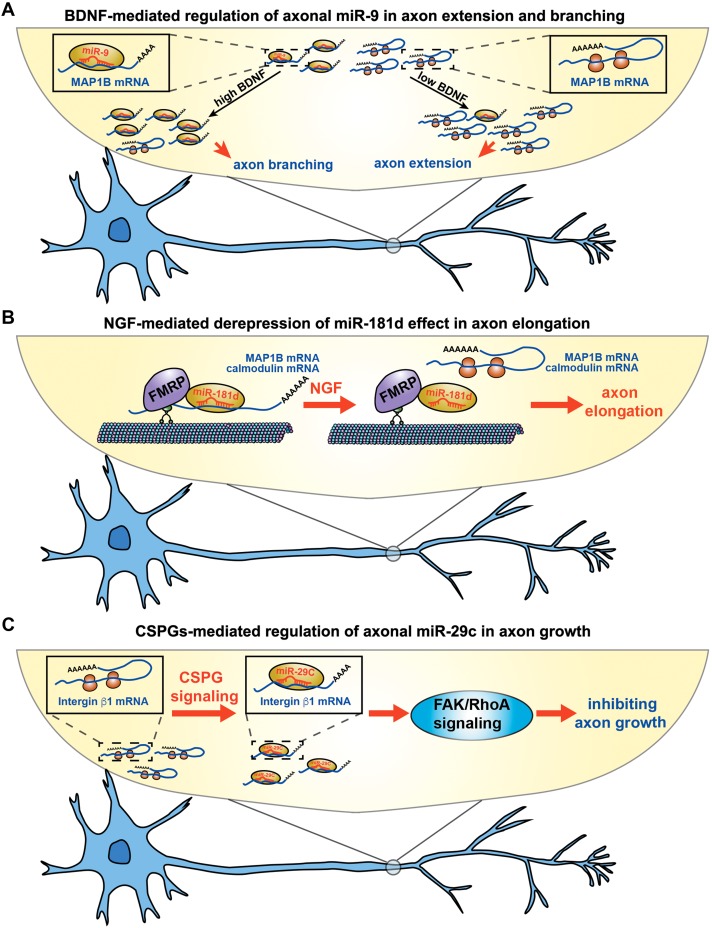Figure 2.
Extrinsic signals are involved in the miRNA-mediated axon development. (A) BDNF-mediated regulation of axonal miR-9 in axon extension and branching by translational control of MAP1B mRNA. Axonal treatment with a low concentration of BDNF reduces the level of axonal miR-9 and increases axon extension by promoting local synthesis of MAP1B, whereas prolonged treatment with a high concentration of BDNF elevates the level of axonal miR-9 and increases axon branching by repressing axonal synthesis of MAP1B. (B) NGF-dependent derepression of axonal miR-181d affects MAP1B and calmodulin synthesis in axon elongation. NGF treatment in axons triggers the dissociation of MAP1B and calmodulin mRNAs from the miR-181d-repressing granules, thereby promoting axon elongation by increasing the axonal synthesis of MAP1B and calmodulin. (C) CSPGs-mediated regulation of axonal miR-29c in axon growth by translational control of integrin β1 mRNA. Axonal application of CSPGs elevates the level of axonal miR-29c and decreases local synthesis of integrin β1, thereby inhibiting the axon outgrowth in cortical neuron through downstream FAK/RhoA signalling.

